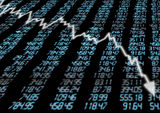When Technology Interrupts Trading
Glitches, “flash crashes” & other disturbances are becoming too numerous.
“Why is this happening?” Those words were undoubtedly spoken on Wall Street Thursday. Perhaps you uttered them, too. At 12:14pm EST, a glitch  halted all trading on the NASDAQ for more than three hours. During that time, the New York Stock Exchange suspended trading in all NASDAQ securities and scratched orders; NASDAQ decided not to cancel any open orders on book.1,2
halted all trading on the NASDAQ for more than three hours. During that time, the New York Stock Exchange suspended trading in all NASDAQ securities and scratched orders; NASDAQ decided not to cancel any open orders on book.1,2
Reaction to the interruption was hot and swift. An exasperated Dennis Gartman (publisher of The Gartman Letter) called the snafu “an embarrassment to the entire financial community” and likened it to the customer service nightmares associated with multi-hour flight delays. “I’d rather have a slower trade execution with data integrity than this kind of repeated nonsense,” LandColt Capital LP managing partner Todd M. Schoenberger told FOX Business.1,3
All in all, the Street coped pretty well with Thursday’s outage, another side effect of high-speed, computer-driven trading. The NASDAQ wrapped up the market day 39 points higher and the Dow and S&P 500 respectively gained 66 and 14 points. Still, the “flash freeze” marked another headache for institutional and retail investors.1,4
Lately, those headaches have been more numerous. We can’t forget the “flash crash” of May 2010, which contributed to a 348-point single-day loss for the DJIA. Last year brought the botched Facebook and BATS IPOs (with shares severely hurt as a consequence) and the software debacle that ruined the reputation of Knight Capital, a risk manager that once handled orders from E-Trade and TD Ameritrade. It was taken over by another firm this year after flirting with bankruptcy. Just this spring, the Chicago Board Options Exchange lost a morning of activity due to a software issue.2
The NASDAQ has been affected by some particularly weird hiccups. Remember the stray squirrel incidents of 1987 and 1994? In each case, a small rodent in suburban Connecticut triggered a power outage that disrupted a mighty New York stock exchange.5
This time, it appears the NASDAQ’s legacy trading system was at fault. What does “legacy” signify? Well, just like the NYSE, the NASDAQ uses trading system software that is built on older versions of said software. So it must be smoothly compatible with those older versions of the in-house application(s) and interface predictably with software used by other exchanges and trading platforms. Each upgrade to legacy software has the potential for a new wave of glitches. Shortly after noon on August 22, NASDAQ’s Security Information Processor, or SIP, network went on the fritz – and that is the network that dispenses quotes and trades. With its SIP out of commission, NASDAQ had no way to distribute pricing to retail traders (and everyone else).6
None of these recent interruptions have matched Black Monday – October 19, 1987, when runaway computerized trading helped the Dow drop nearly 22% in one trading day – but they have market observers pleading for improved trading technologies.7
So how quickly can we put these problems in the past? Don’t hold your breath. The SEC has called for uniform technology standards for all U.S. financial exchanges via its Reg SCI proposal, but that hasn’t gotten much traction. There are 13 different exchanges out there now, and as the downturn hit Wall Street with layoffs, exchanges and brokerages have comparatively fewer IT pros servicing them than they once did.6
Decades ago, movies, TV shows and sci-fi novels repeatedly cautioned us that no matter how wonderful computers were, they would never, ever, ever be able to replace humanity. You could argue that this was the messaging of a more innocent time, but the claim sounds as relevant as ever today, when Wall Street endures moments of paralysis as mind-blowingly sophisticated technologies rebel. Is there any way to preserve a human touch?
As Doreen Mogavero, CEO of Mogavero, Lee & Co. commented to FOX Business, “The New York Stock Exchange has the right model. Human beings and technology. The NYSE management has refused to give up the human element on the floor for just this reason … regulators have to begin to realize that the pendulum has swung too far in the direction of machines and they need to reevaluate the way they think of the market. They should follow the model that the NYSE has created.”3
Patience is a virtue, and during these instances on Wall Street, patience is certainly required. As Georgetown University finance professor James Angel told the Associated Press Thursday, “I think people are
Registered Representative, Securities offered through Cambridge Investment Research, Inc., a Broker/Dealer, Member FINRA/SIPC. Investment Advisor Representative, Cambridge Investment Research Advisors, Inc., a Registered Investment Advisor. Cambridge and North Light Financial Services are not affiliated. Cambridge does not offer tax advice. Office of Supervisory Jurisdiction: 46 Accord Park Drive / Norwell, MA 02061 Phone: 781-878-4063
This material was prepared by MarketingLibrary.Net Inc., and does not necessarily represent the views of the presenting party, nor their affiliates. All information is believed to be from reliable sources; however we make no representation as to its completeness or accuracy. Please note – investing involves risk, and past performance is no guarantee of future results. The publisher is not engaged in rendering legal, accounting or other professional services. If assistance is needed, the reader is advised to engage the services of a competent professional. This information should not be construed as investment, tax or legal advice and may not be relied on for the purpose of avoiding any Federal tax penalty. This is neither a solicitation nor recommendation to purchase or sell any investment or insurance product or service, and should not be relied upon as such. All indices are unmanaged and are not illustrative of any particular investment.
Citations.
1 – tinyurl.com/l9ddwjt [8/22/13]
2 – sltrib.com/sltrib/money/56769516-79/nasdaq-trading-technical-due.html.csp [8/22/13]
3 – foxbusiness.com/investing/2013/08/22/traders-react-to-nasdaq-flash-freeze/ [8/22/13]
4 – cnbc.com [8/22/13]
5 – blogs.wsj.com/moneybeat/2013/08/22/once-upon-a-time-it-was-a-squirrel-that-broke-nasdaq/ [8/22/13]
6 – tinyurl.com/keqg5pu [8/22/13]
7 – investopedia.com/terms/b/blackmonday.asp [8/22/13]




